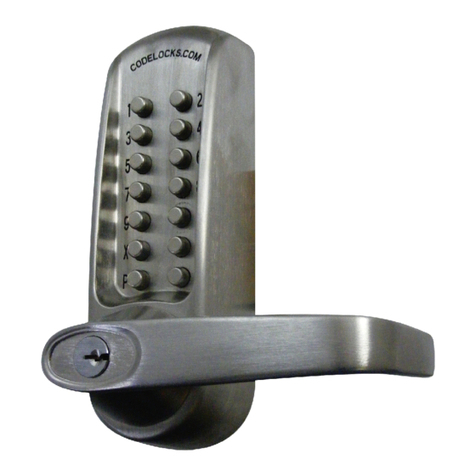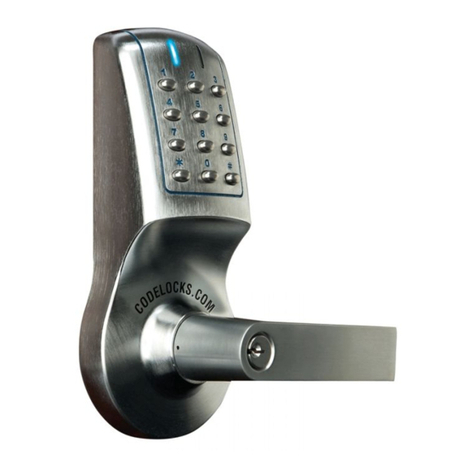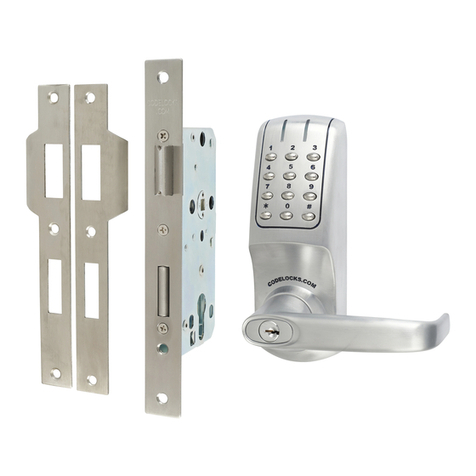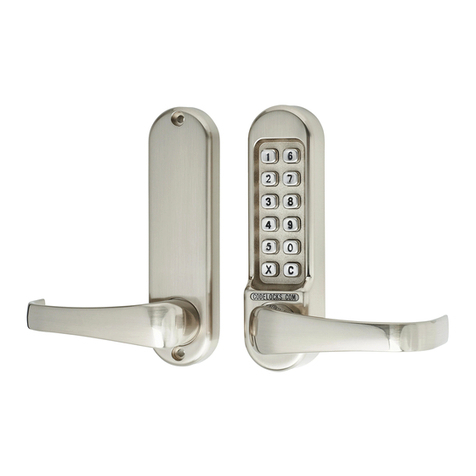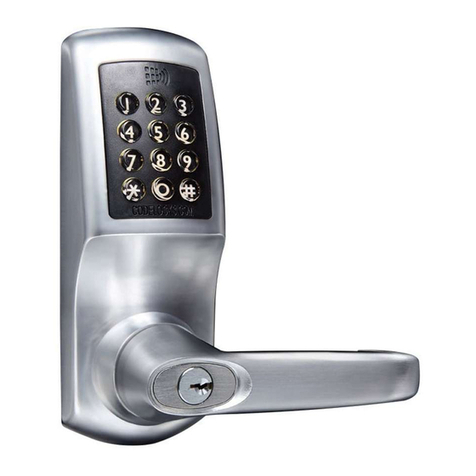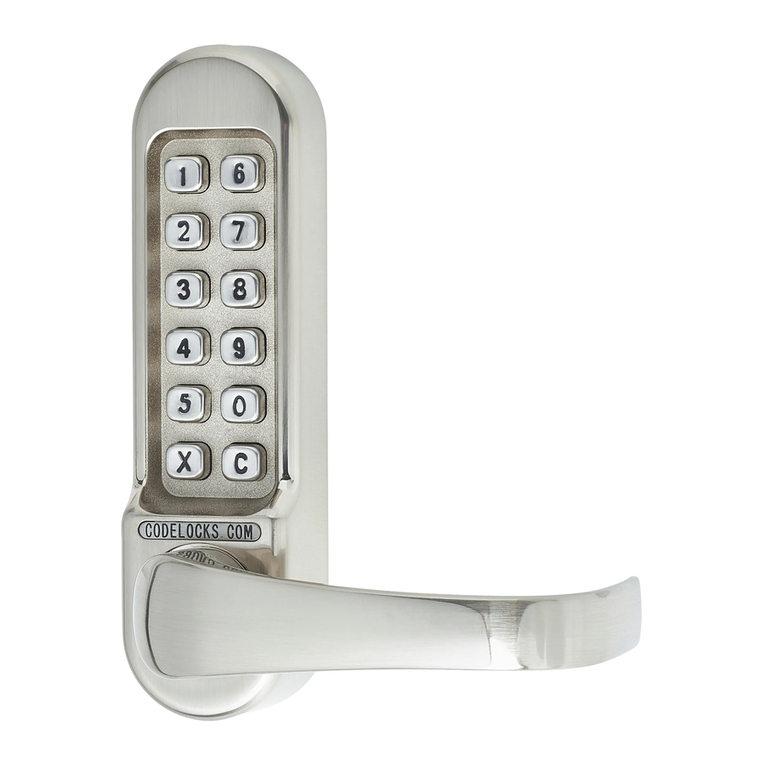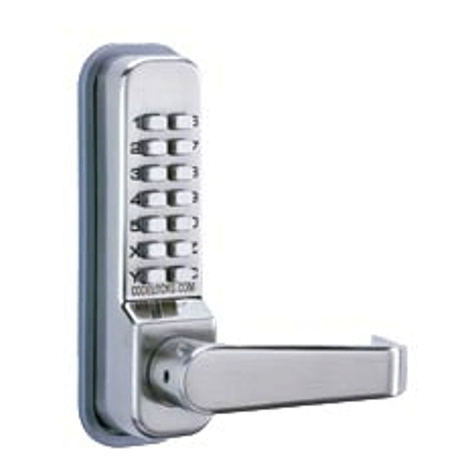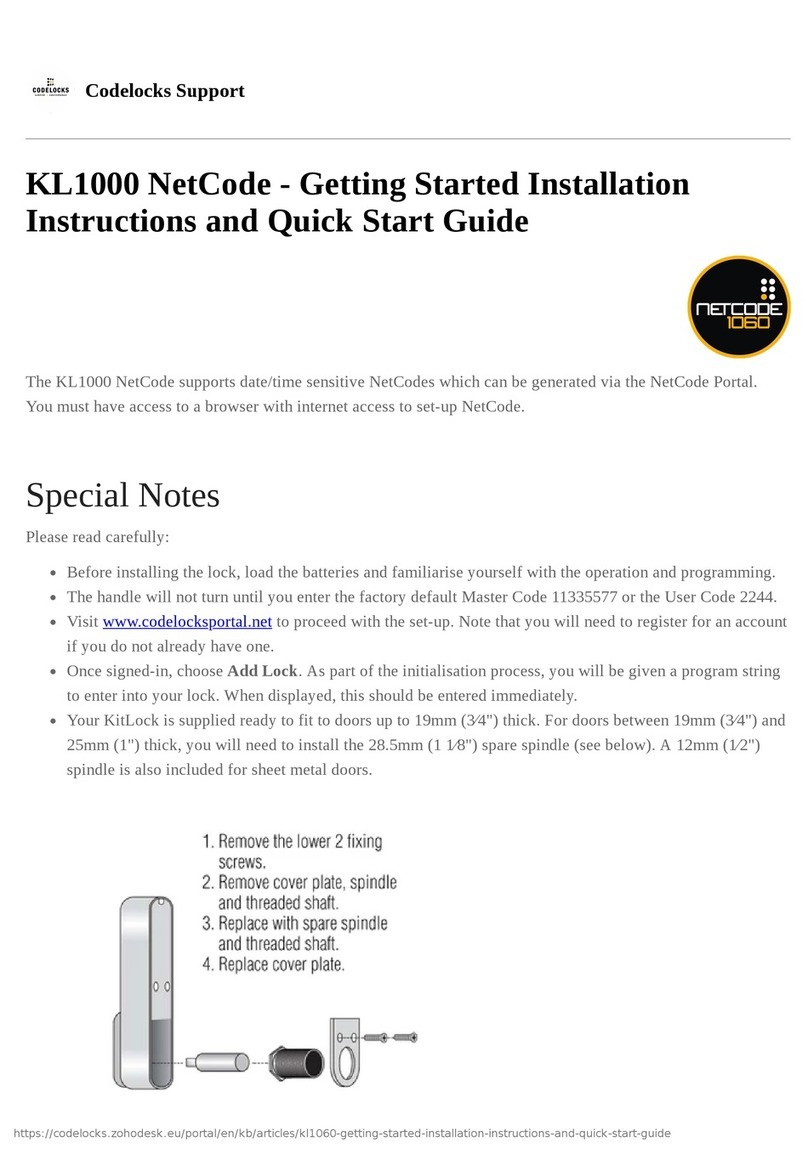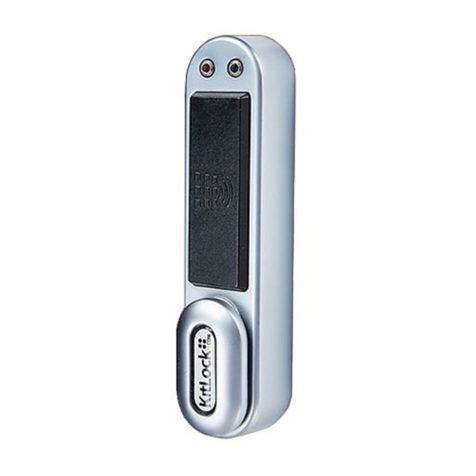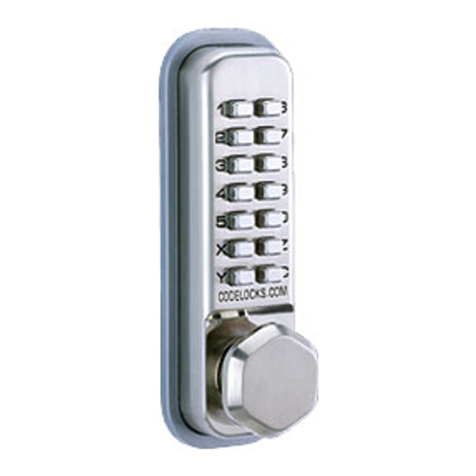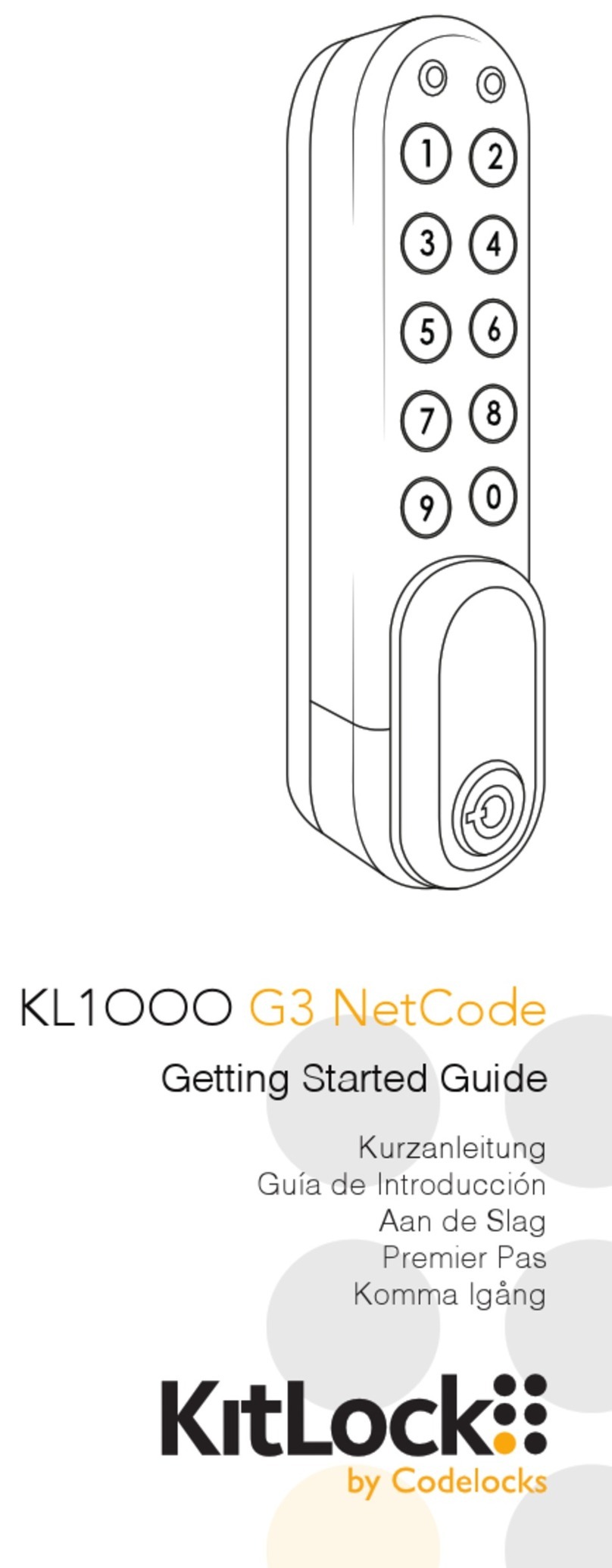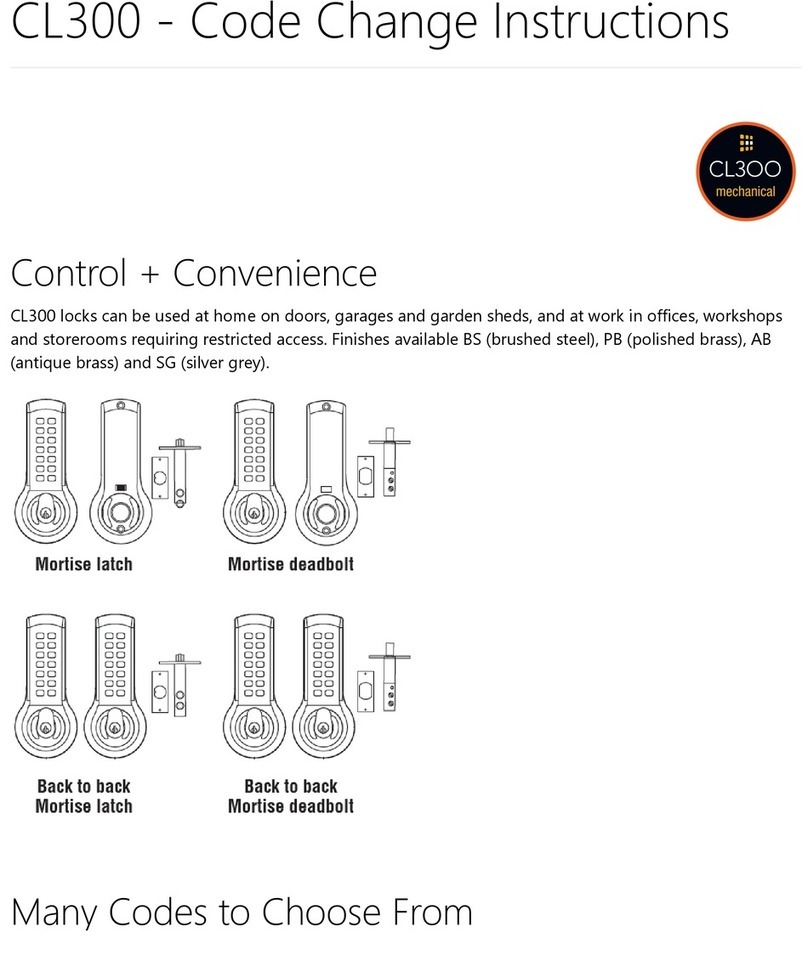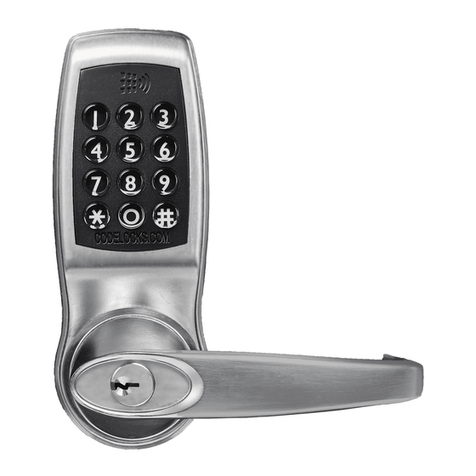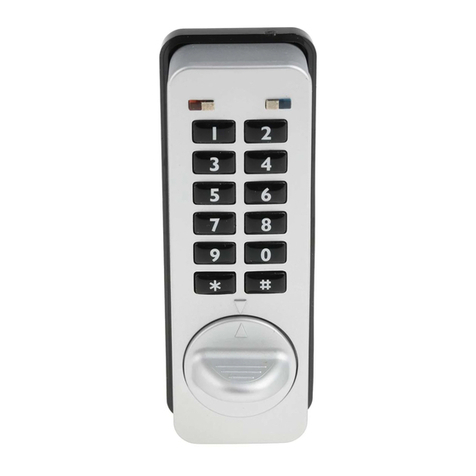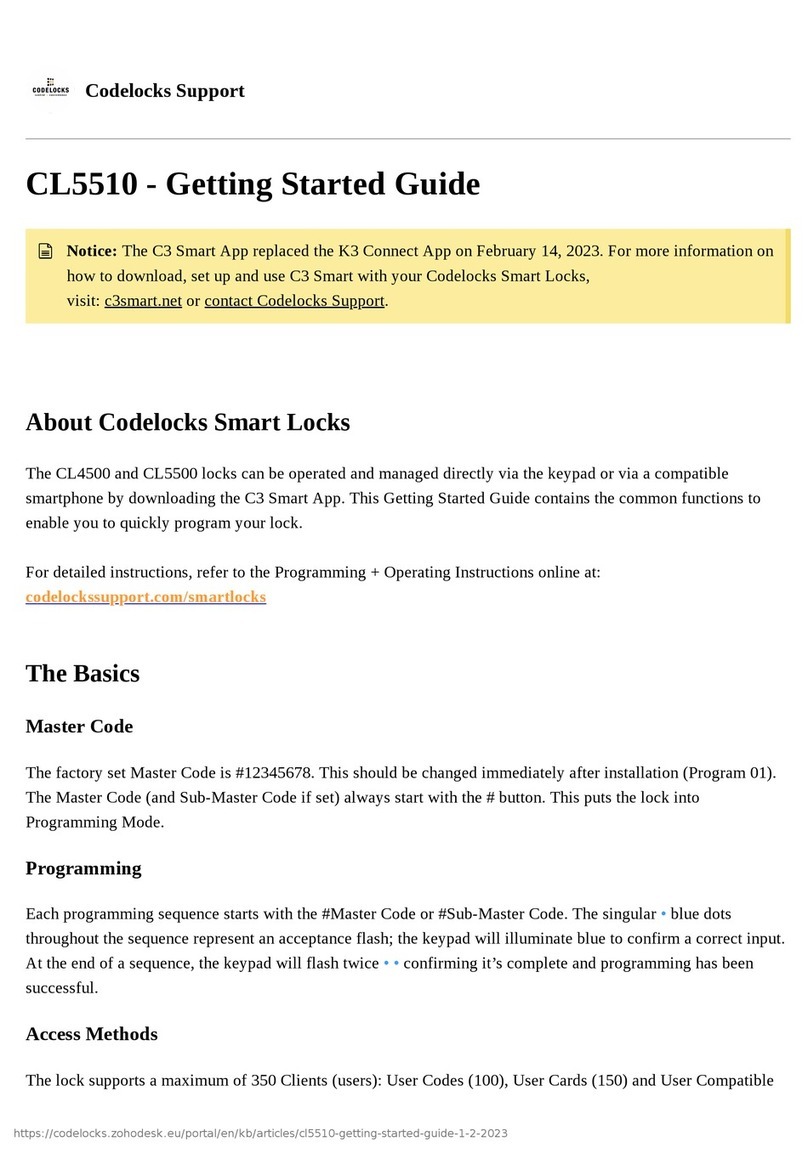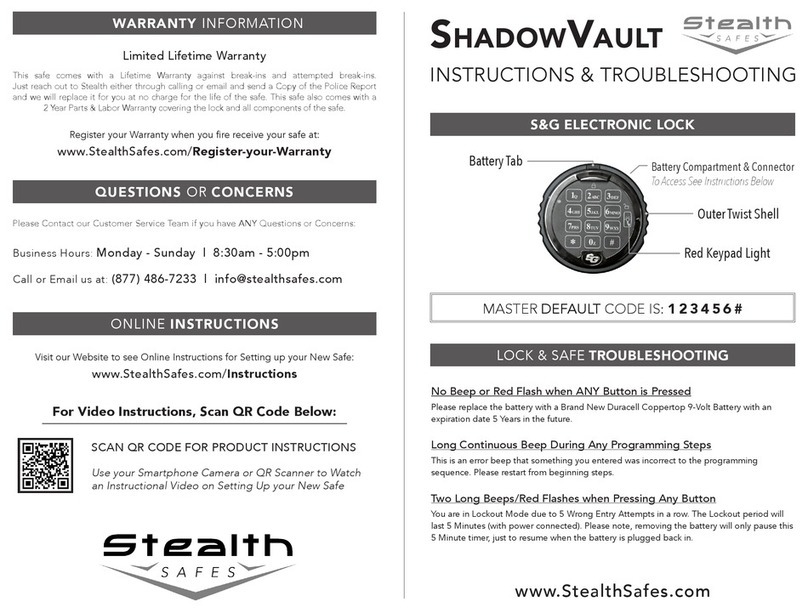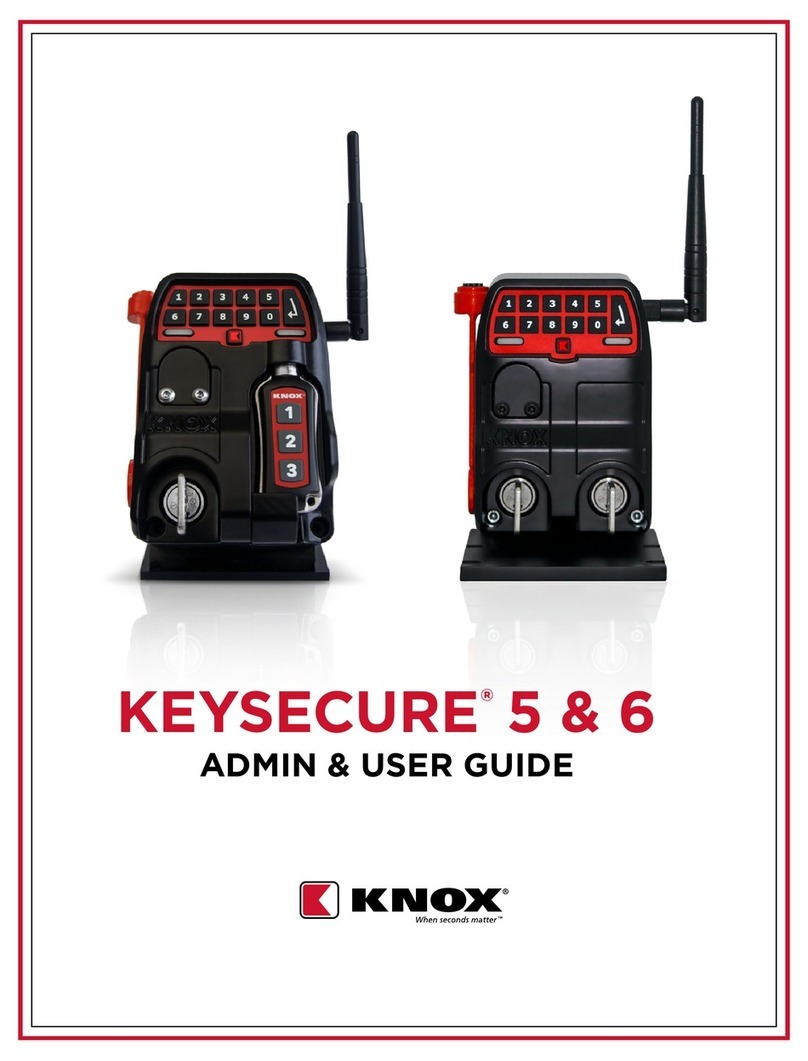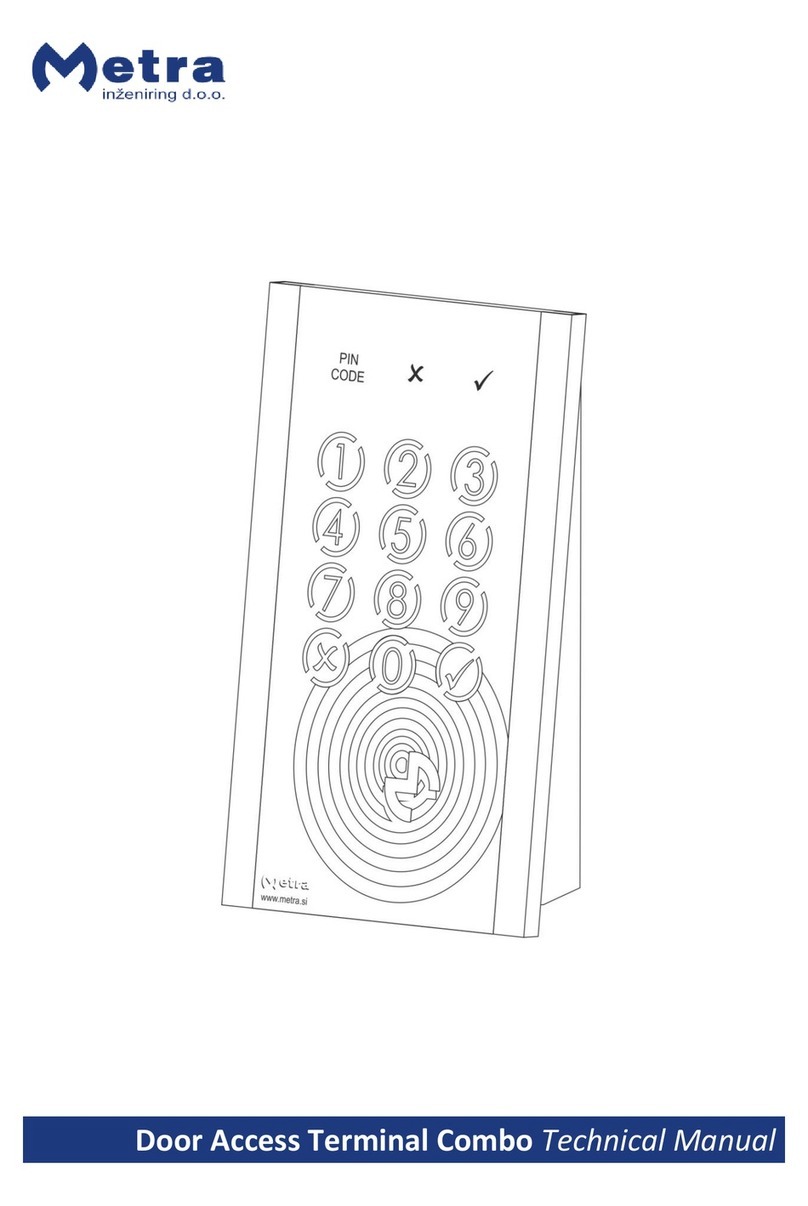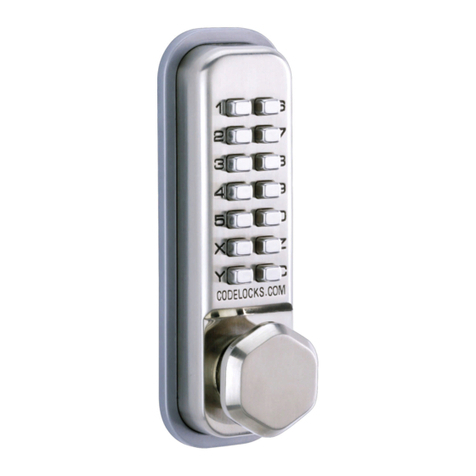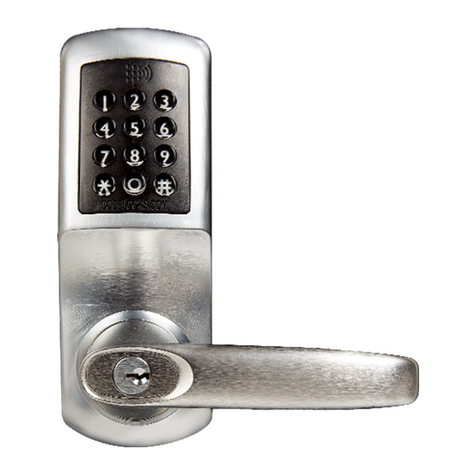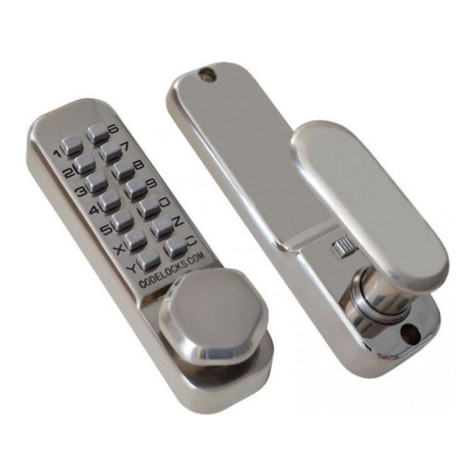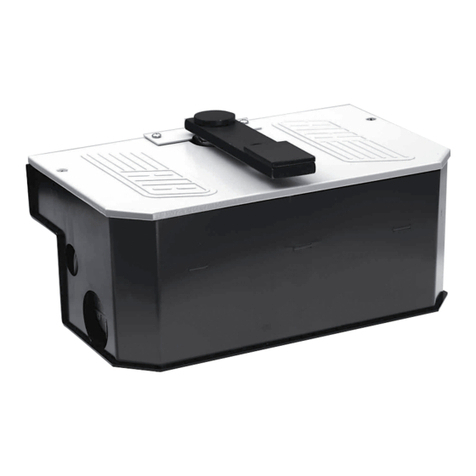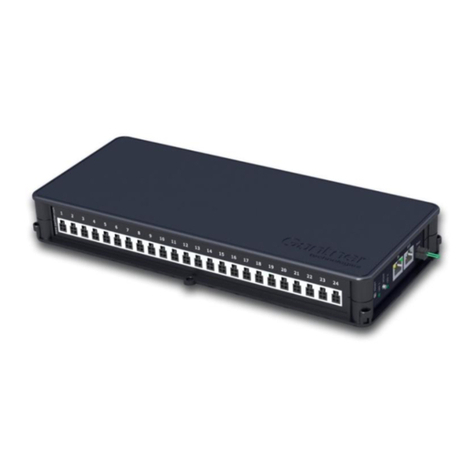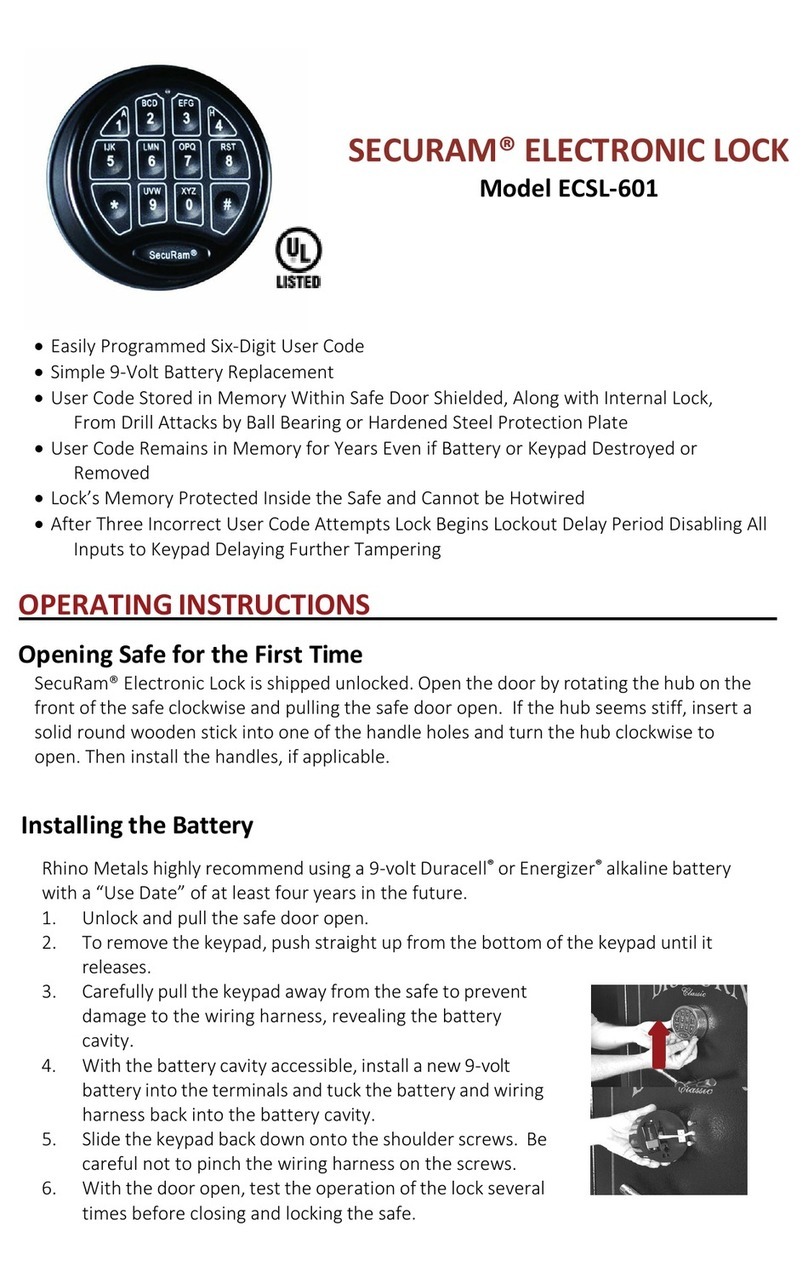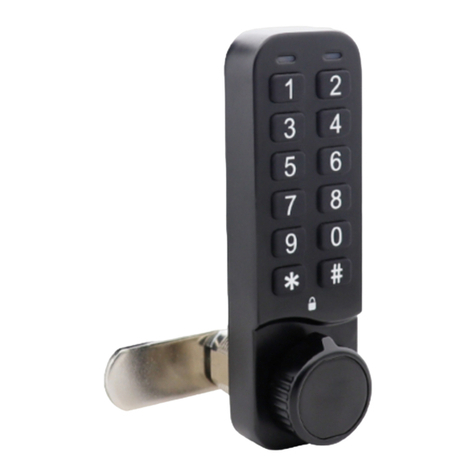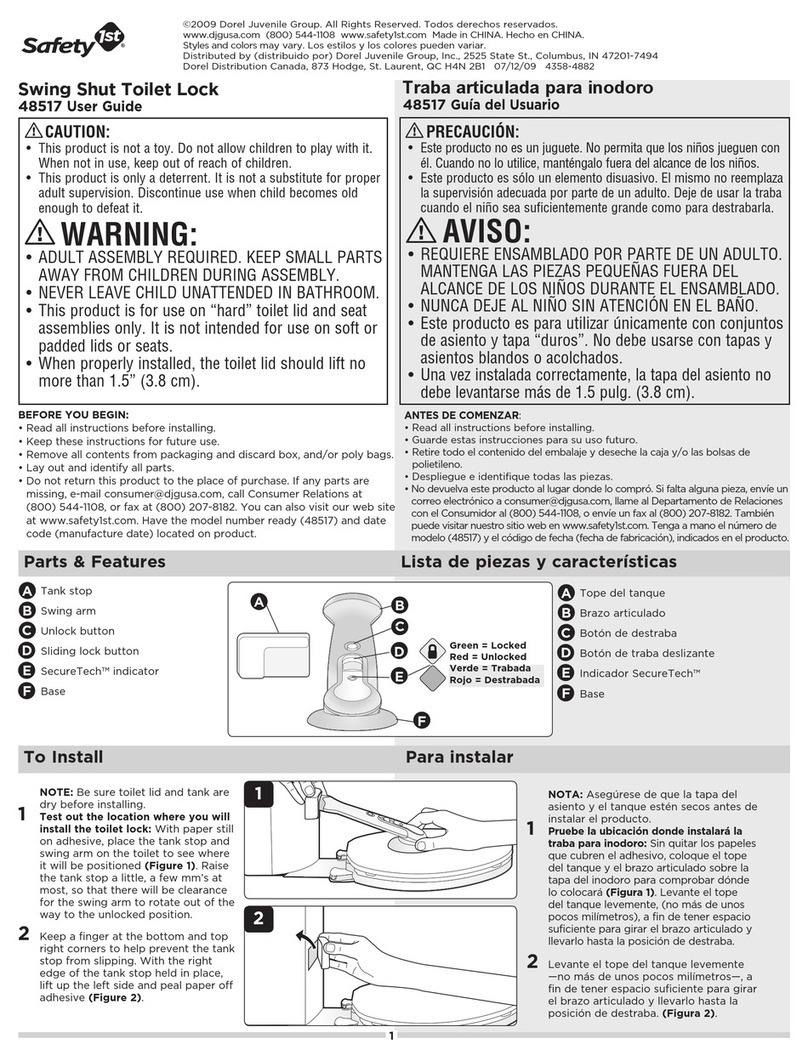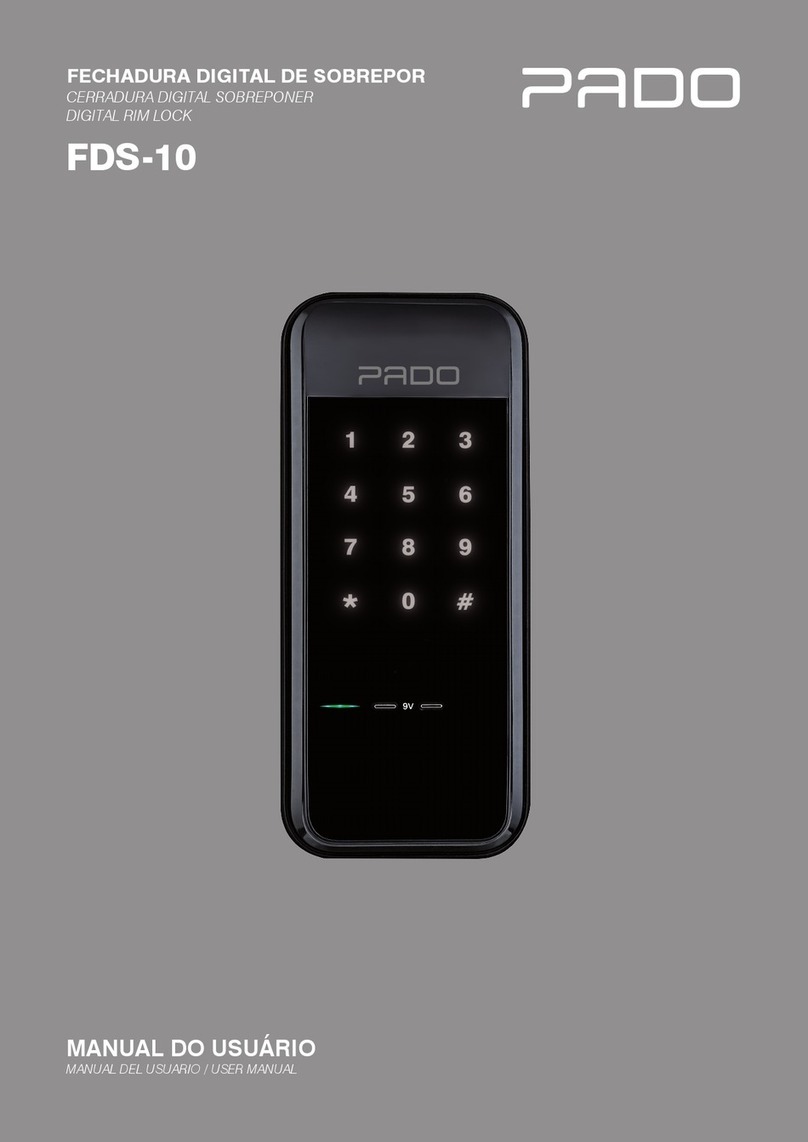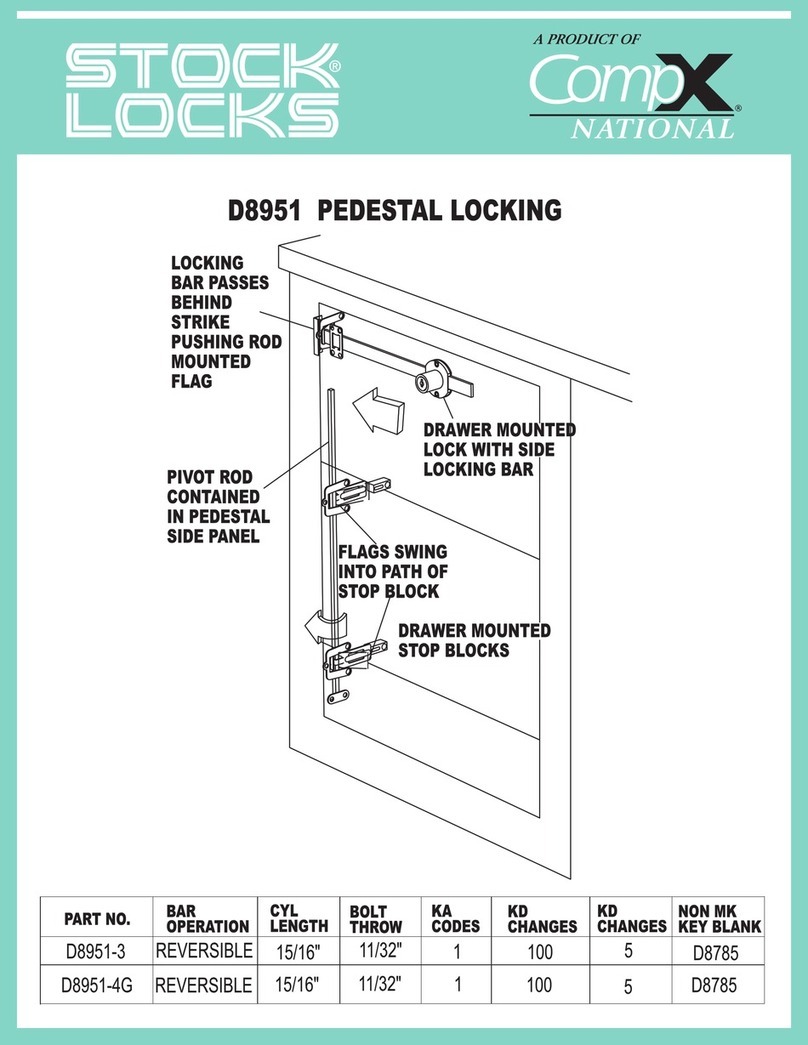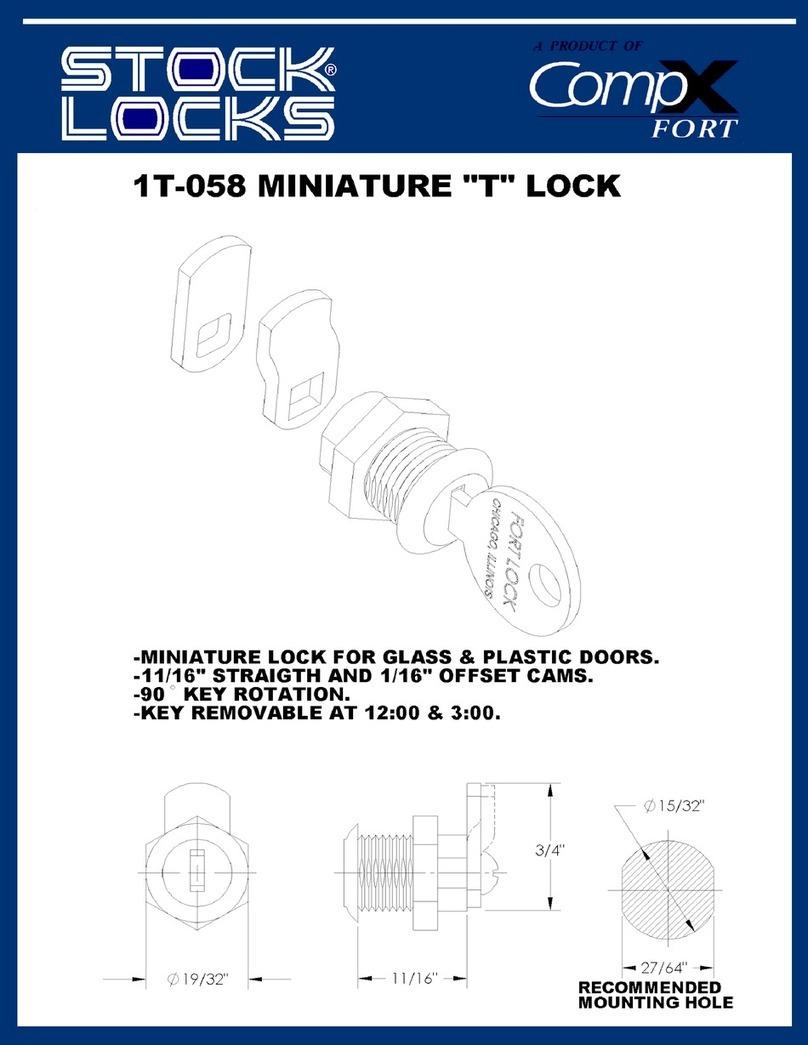
CL100 and CL200 locks can be used at home on doors, garages
and garden sheds, and at work in ofces, workshops and
storerooms requiring restricted access. Available in Silver
Grey, Polished Brass and Stainless Steel.
MANY CODES TO CHOOSE FROM
The CL100 and CL200 code chamber consists of 13 buttons from
which the code is selected, and a ‘C’ button which is used to re-set
the chamber after an incorrect entry, and which must always be used
as the rst digit of a code. Buttons may only be used ONCE in a code.
For example, 1212 is not possible.
A CL100 and CL200 code, or combination, can be entered in any
order or sequence; e.g. 1234 can be 4321 or 1342 or whatever
sequence is most convenient to remember. With 13 buttons, a total
of 8,191 different codes are available, any of which can be entered in
any sequence.
Remove the CL100 or CL200 lock from the door by unscrewing the
2 screws in the back plate.
Press the ‘C’ button to reset the chamber and place the lock case on
a at surface with the buttons down.
Remove the 2 red screws and carefully lift off the code chamber
plate. Check that all 14 springs are held in place on the plate.
Note that the coloured code tumblers correspond in position to the
existing code. The silver non-code tumblers ll the other positions.
The C tumbler is not coloured.
Hold the lock in your hand and depress the ‘C’ button. Keeping
the ‘C’ button depressed, use tweezers to re-position the tumblers
to correspond with your new code. The square notches of ALL
tumblers MUST face outwards, with the square tips ON TOP: See
diagram below. DO NOT force the tumblers in.
Replace the code chamber plate carefully with the 2 red screws.
Check the operation of the new code, and make a written note of
it before re-installing the lock.
Insert the spindle, with the spring on the code side.
On latchbolt locks the spindle must engage the latch
as follows:
MAINTENANCE
No maintenance of the working parts is necessary. DO NOT OIL.
To maintain the nish the lock should be cleaned regularly with a
soft cloth. A silicone spray or similar, should be used to provide a
protective lm against grit and grime.
GUARANTEE
If any Codelocks mechanical lock should develop a fault, at any time
due to manufacturing, just call the Codelocks Helpline and arrange for
it to be repaired free of charge.
CODE CHANGE INSTRUCTIONSCONTROL + CONVENIENCE
NB: Holding the ‘C’ button depressed whilst re-positioning
the tumblers is ESSENTIAL to avoid damaging the internal
mechanism. DO NOT attempt to reposition the ‘C’ tumbler.
Surface
Deadbolt
Back to Back
Mortice Latch
Mortice Latch
with Hold Open Feature
Mortice
Deadbolt
Key Override
Option
16
7
8
2
3
4
5
Generally codes are set in the range of 4 to 7 digits, and the total
number of codes in this range is 5434. The lock is factory set with a
randomly selected 6 digit code starting with the ‘C’ button.
The code is not recorded by the factory. The code can be changed as
often as required to any other 6 digit code. Every new code must start
with the ‘C’ button. Using the spare tumblers, the code length can be
changed to 5 or 7 digits.
Shorter codes are not recommended.
+ 1 digit = 13 codes
+ 2 digits = 78 codes
+ 3 digits = 286 codes
+ 4 digits = 715 codes
+ 5 digits = 1,287 codes
+ 6 digits = 1,716 codes
+ 7 digits = 1,716 codes
+ 8 digits = 1,287 codes
+ 9 digits = 715 codes
+ 10 digits = 286 codes
+ 11 digits = 78 codes
+ 12 digits = 13 codes
+ 13 digits = 1 code
Total codes
8,191
C
C
C
C
C
C
C
C
C
C
C
C
C
Door hung on right viewed from outside
Door hung on left viewed from outside
Coloured code tumblers
with square notch
in low position
Silver non-code tumblers
with square notch
in high position
Section through lockcase
showing square notches in
tumblers facing outwards
